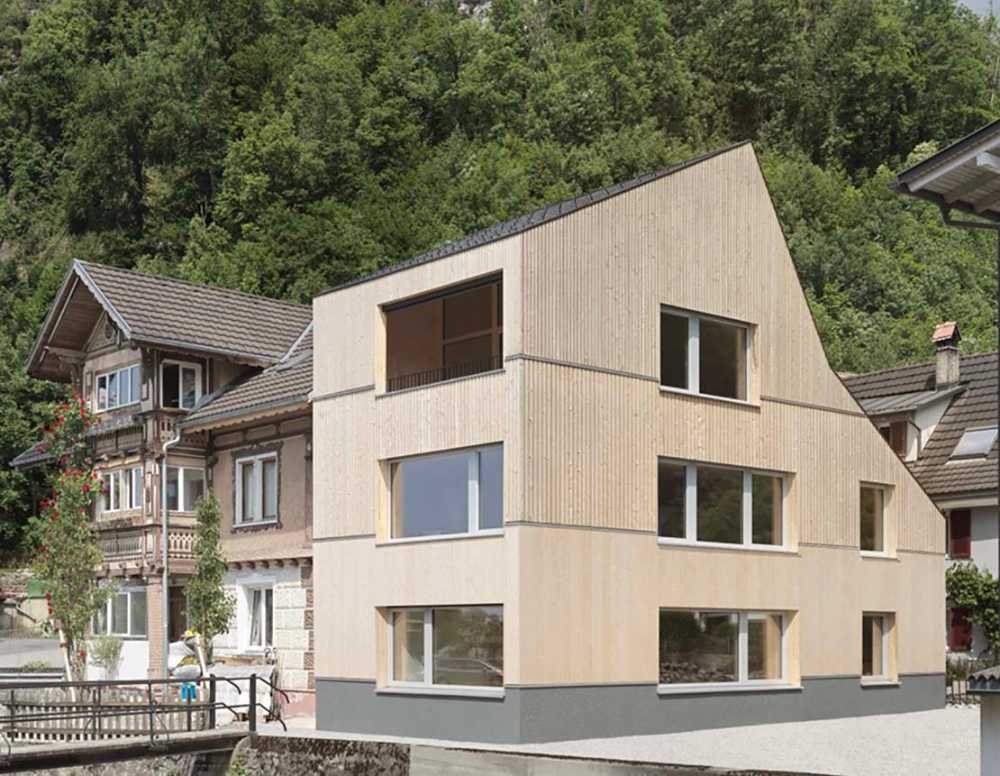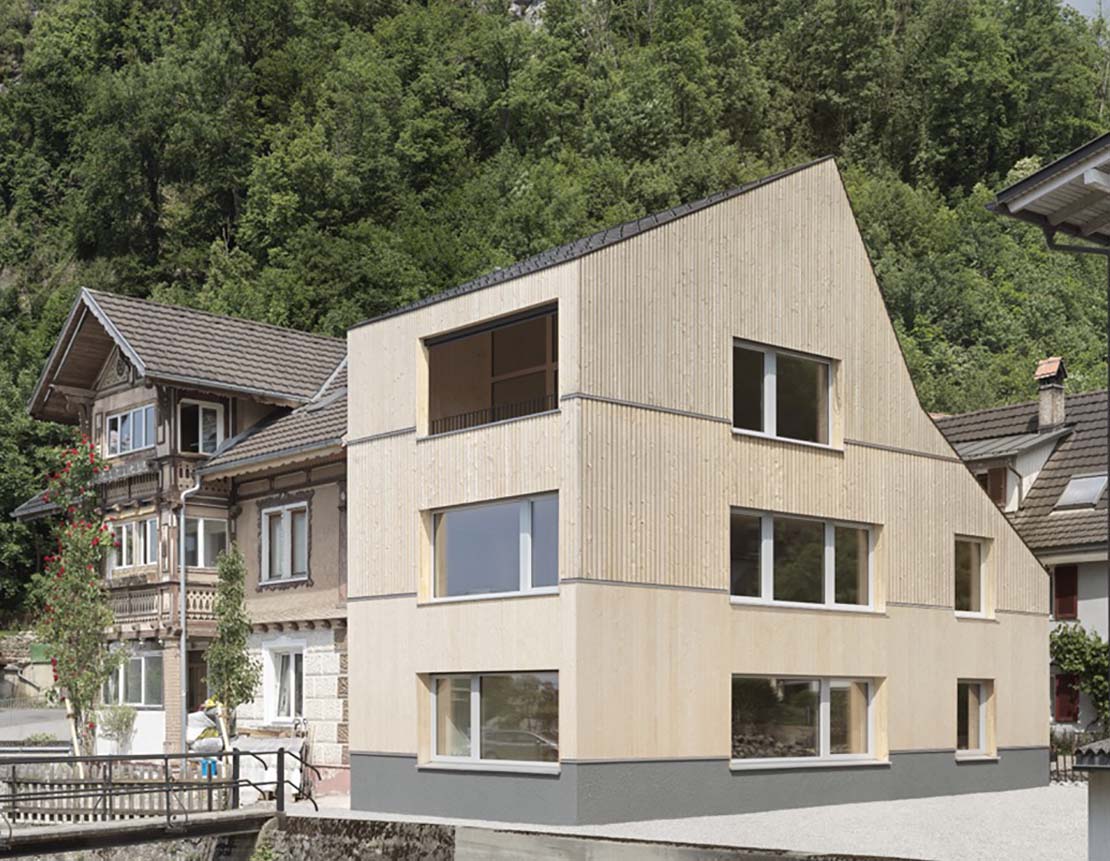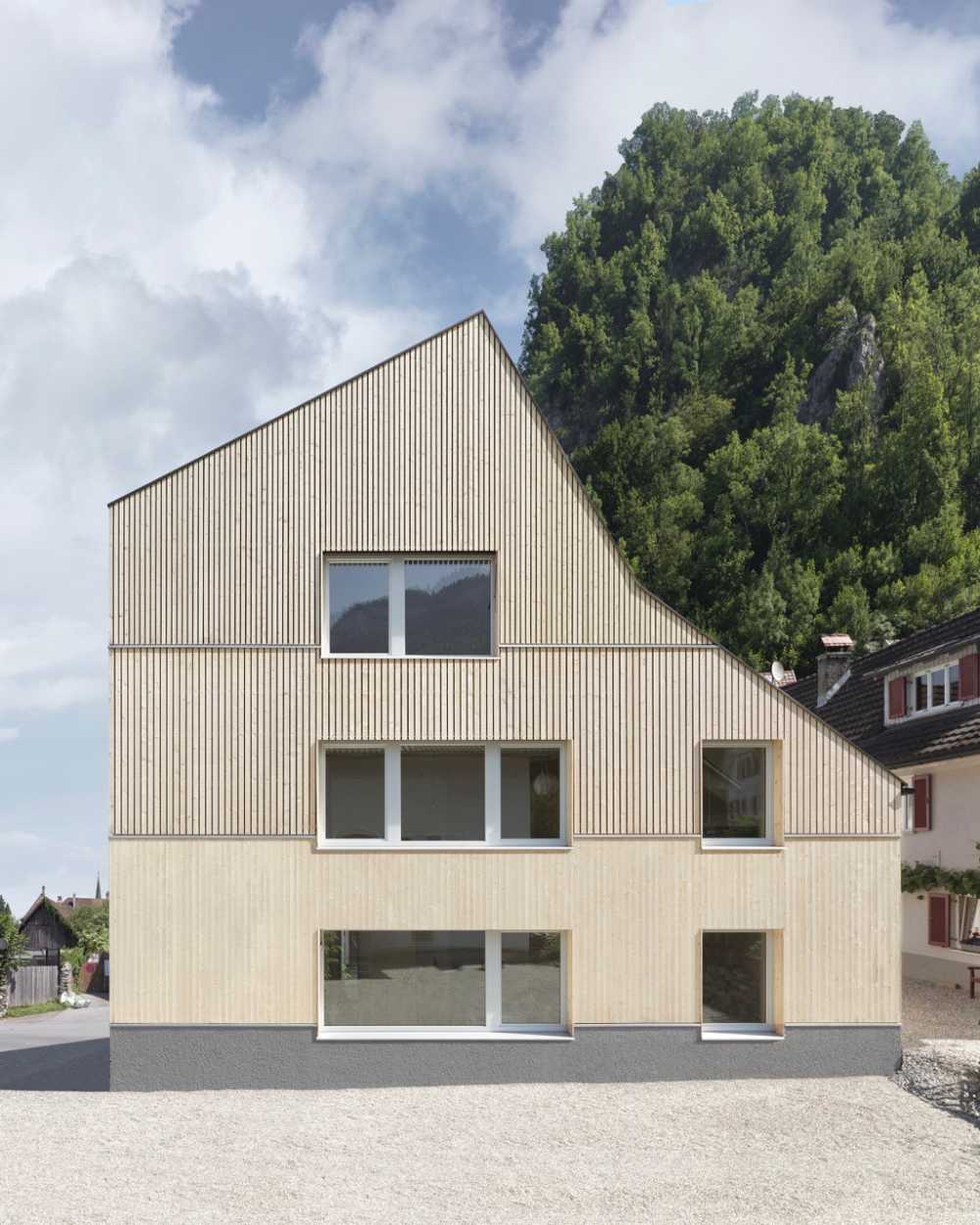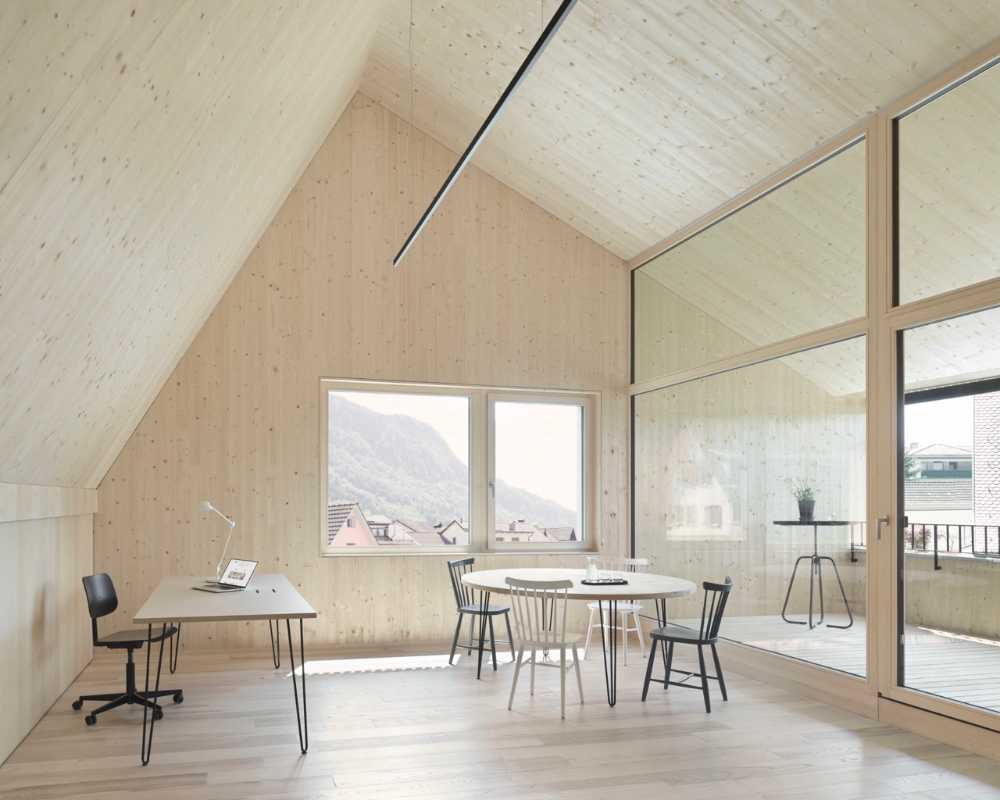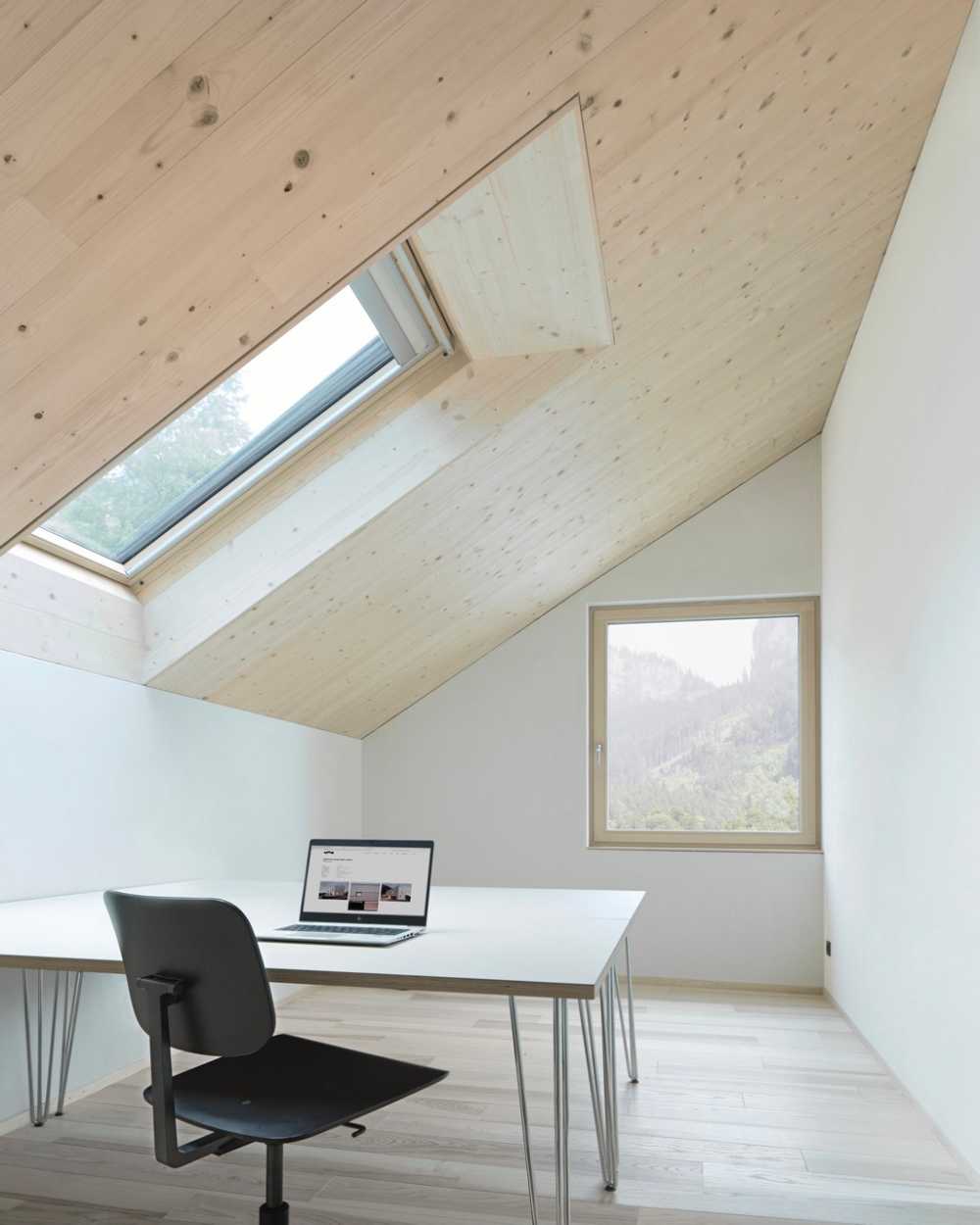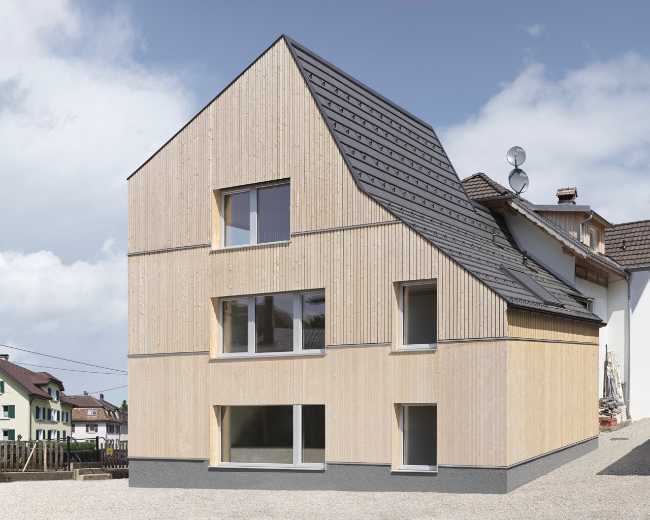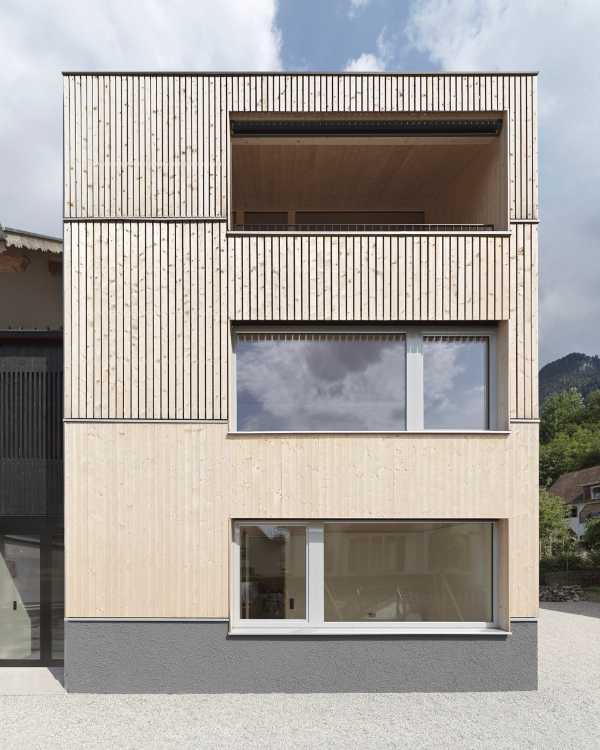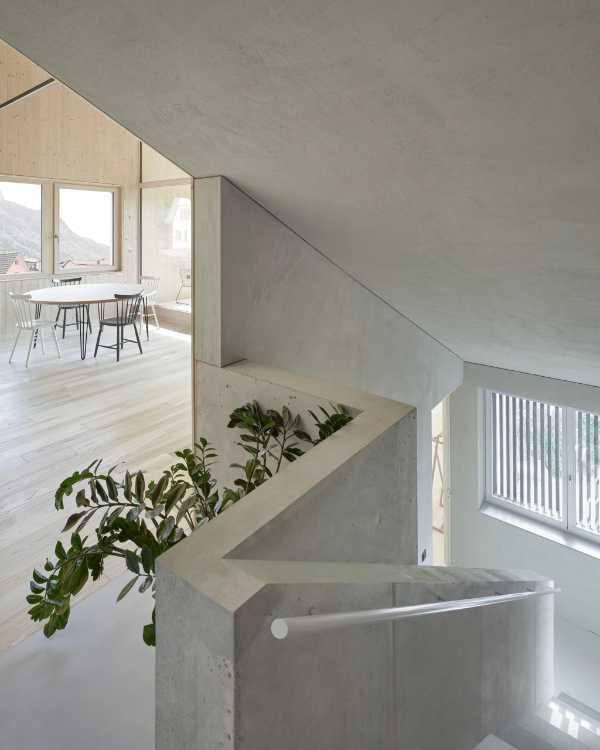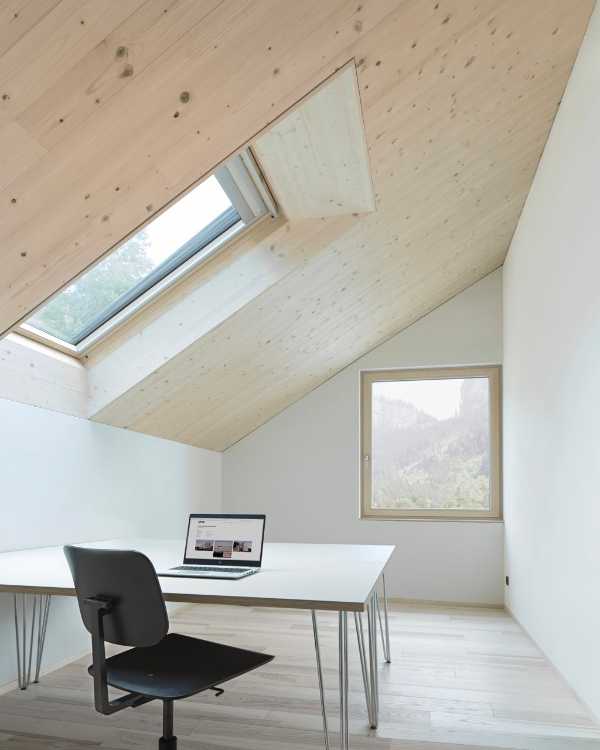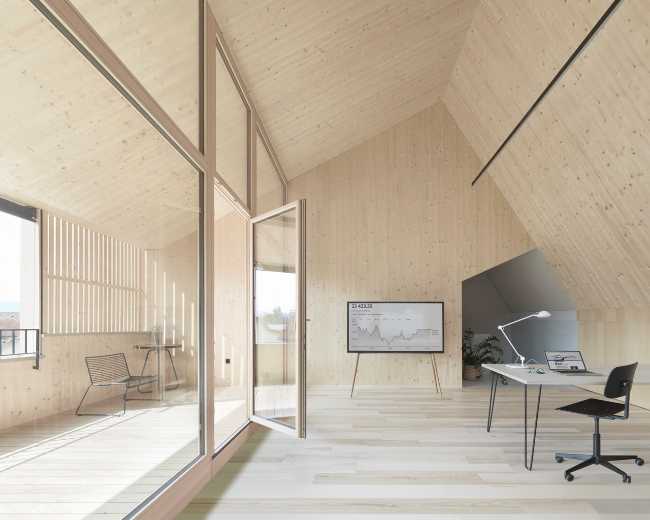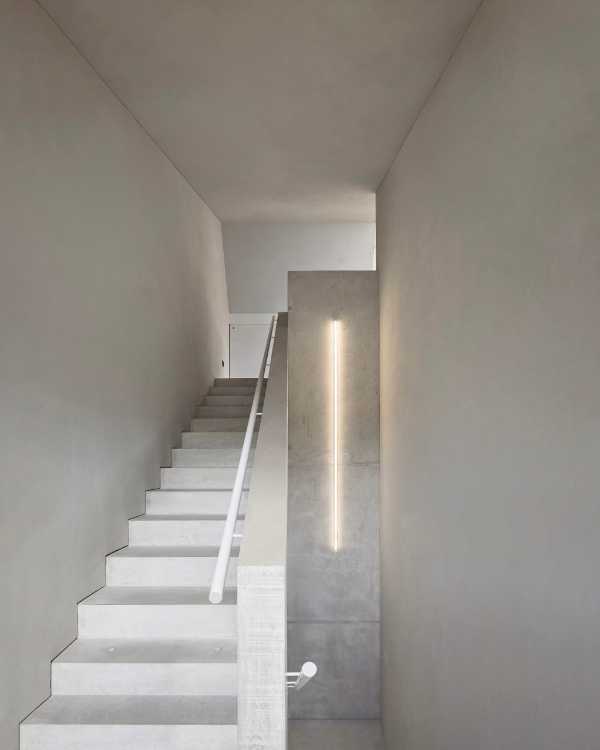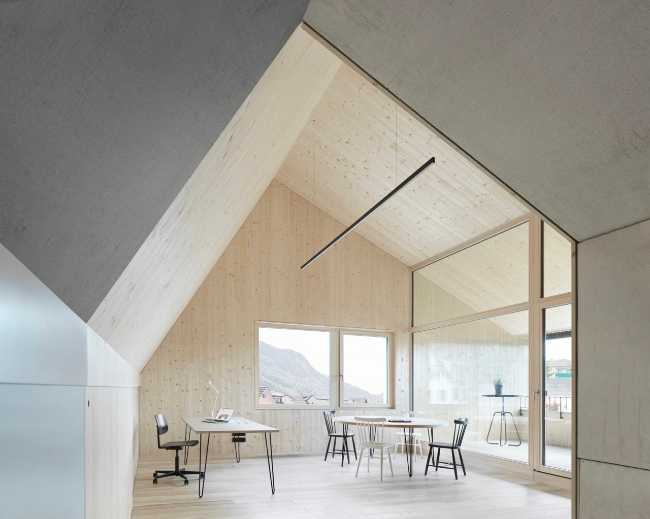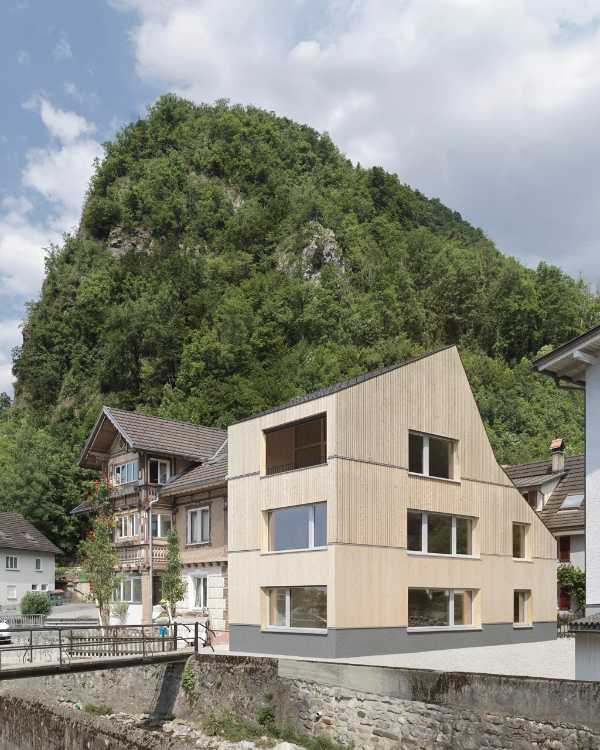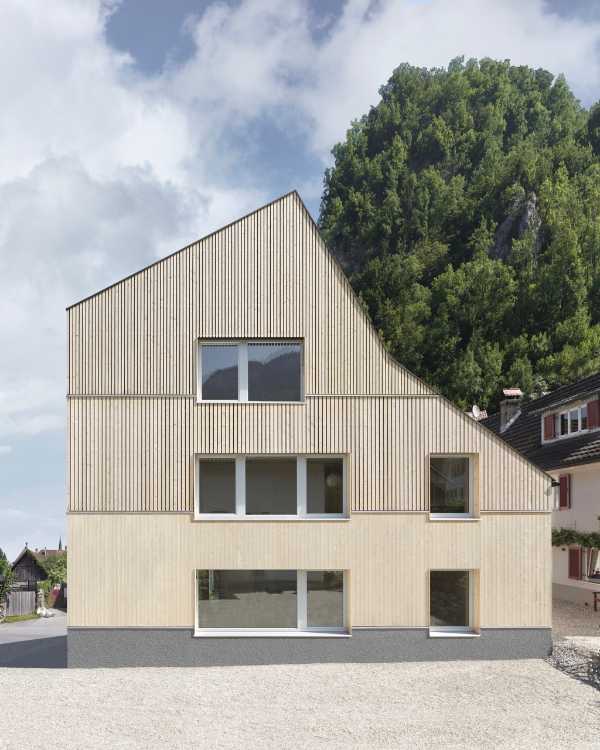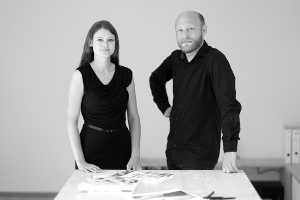Recovery of the building heritage of a historic center
Located behind the arch of the castle square, under the ruins of Alt-Ems Castle, the original center of the city is undergoing a comprehensive development process. The densification of the historic center and the building requalified by the MWArchitekten studio becomes emblematic of this urban area redevelopment: it is strategically positioned from an urban planning perspective and plays a fascinating role from a landscape perspective. We are indeed in the confluence area of the Ems and Salzbach rivers, where mills and sawmills were in operation from the 16th to the 20th century. This intervention is one of the most significant renovation projects in the area and replaces a wooden extension that was destroyed in a fire in 2020.

